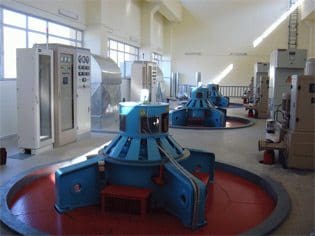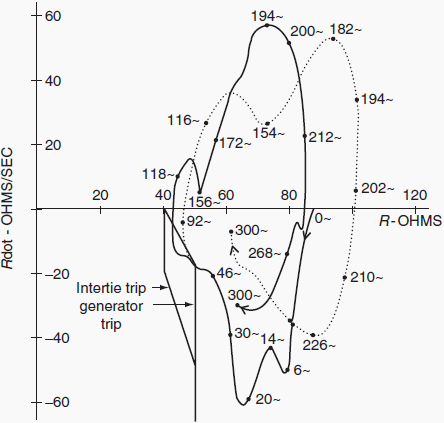
Generator tripping is an effective (cost-effective) control especially if hydro units are used. Tripping of fossil units, especially gas- or oil-fired units, may be attractive if tripping to house load is possible and reliable. Gas turbine and combined-cycle plants constitute a large percentage of the new generation.
Occasional tripping of these units is feasible and can become an attractive stability control in the future. Most generator tripping controls are event-based (based on outage of generating plant out going lines or outage of tie lines). Several advanced response-based generator tripping controls, however, have been implemented. The automatic trend relay (ATR) is implemented at the Colstrip generating plant in eastern Montana.
The plant consists of two 330-MW units and two 700-MW units. The microprocessor-based controller measures rotor speed and generator power and computes acceleration and angle. Tripping of 16–100% of plant generation is based on 11 trip algorithms involving acceleration, speed, and angle changes. Because of the long distance to Pacific Northwest load centers, the ATR has operated many times, both desirably and undesirably.
There are proposals to use voltage angle measurement information (Colstrip 500-kV voltage angle relative to Grand Coulee and other Northwest locations) to adaptively adjust ATR settings, or as additional information for trip algorithms. Another possibility is to provide speed or frequency measurements from Grand Coulee and other locations to base algorithms on speed difference rather than only Colstrip speed.
A Tokyo Electric Power Company stabilizing control predicts generator angle changes and decides the minimum number of generators to trip. Local generator electric power, voltage, and current measurements are used to estimate angles. The control has worked correctly for several actual disturbances.

The Tokyo Electric Power Company is also developing an emergency control system, which uses a predictive prevention method for step-out of pumped storage generators. In the new method, the generators in TEPCO’s network that swing against their local pumped storage generators after serious faults are treated as an external power system.
The parameters in the external system, such as angle and moment of inertia, are estimated using local on-line information, and the behavior of local pumped storage generators is predicted based on equations of motion.
Reference [Haner, J.M., Laughlin, T.D., and Taylor, C.W., Experience with the R–Rdot out-of-step relay, IEEE Transactions on Power Delivery, PWRD-1(2), 35–39, April 1986.] describes response-based generator tripping using a phase-plane controller. The controller is based on the apparent resistance–rate of change of apparent resistance (R–Rdot) phase plane, which is closely related to an angle difference–speed difference phase plane between two areas.
The primary use of the controller is for controlled separation of the Pacific AC Intertie. Figure shows simulation results where 600 MWof generator tripping reduces the likelihood of controlled separation.











We have a problem with our oxygen gas plant.running with a grid no problem but with generator it trips a contactor of a compressor we try to change sqence to avail please us